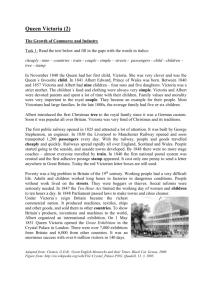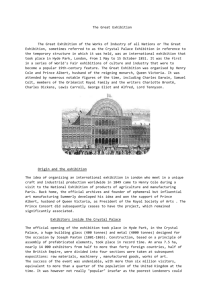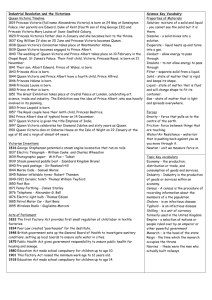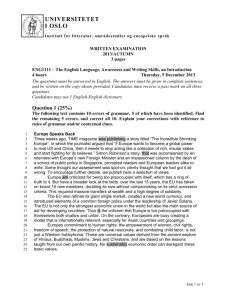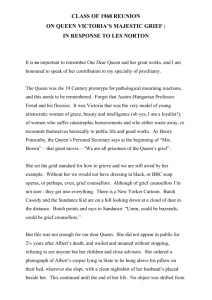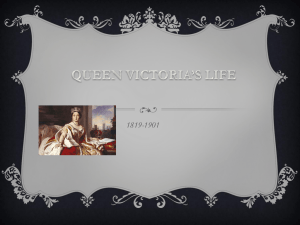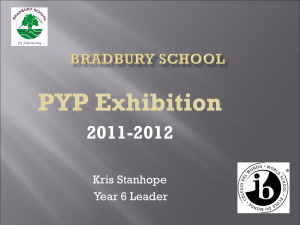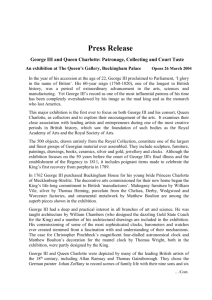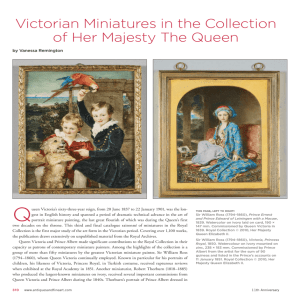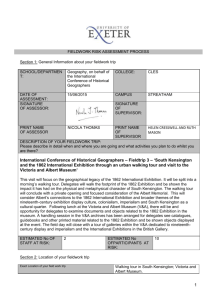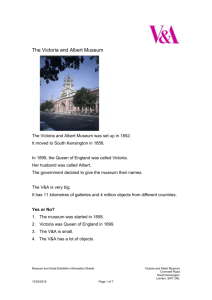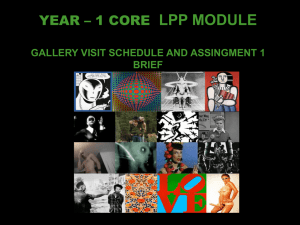The Great Exhibition
advertisement
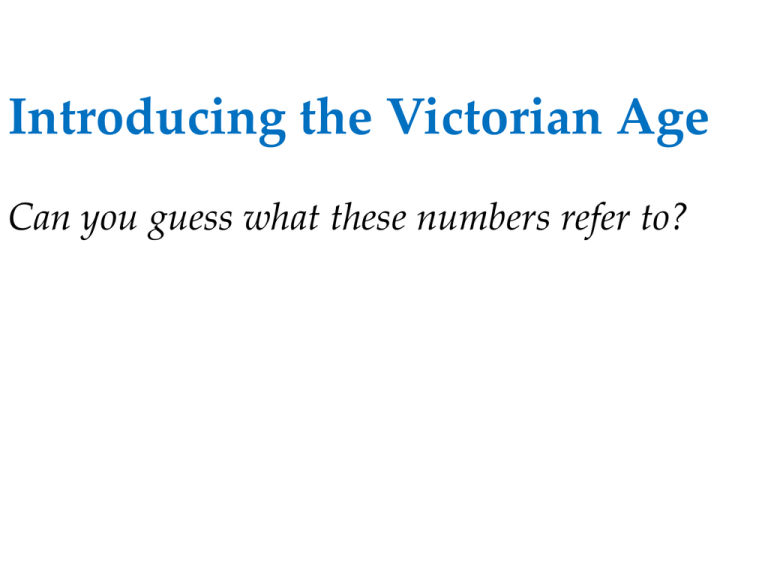
Introducing the Victorian Age Can you guess what these numbers refer to? 6 months £ 16,000,000 6,000,000 visits 92,000 sq metres 14,000 exhibitors 5 continents The Great Exhibition London – Hyde Park,1851 the first world’s fair More information and pictures of the Great Exhibition: Dickinson’s Comprehensive Pictures of the Great Exhibition The volume was published in 1852 and is available online at: http://www.archive.org/stream/Dickinsonscompr1#page/n35/mode/2up The Crystal Palace from the northeast, from Dickinson, Comprehensive Pictures of the Great Exhibition of 1851, 1852 The glimpse of the transept through the iron gates, the waving palm, flowers, statues, myriads of people filling the galleries and seats around, with the flourish of trumpets as we entered, gave us a sensation which I can never forget and I felt much moved... The sight as we came to the middle where the steps and a chair (which I did not sit on) were placed, with the beautiful crystal fountain just in front of it, was magical – so vast, so glorious, so touching. One felt – as so many did whom I have since spoken to – filled with devotion, more so than by any service I have ever heard. The tremendous cheers, the joy expressed in every face, the immensity of the building, the mixture of palms, flowers, trees, statues, fountains [...], and my beloved husband, the author of this ‘peace Festival’ which united the industry of all nations of the earth – all this was moving indeed, and it was and is a day to live forever. (Queen Victoria on the opening of The Great Exhibition, 1851, quote from A. N. Wilson, The Victorians, 2002) GREAT EXHIBITION SCIENCE and TECHONOLOGY INDUSTRY and TRADE WORLD FAIR PRINCE ALBERT SCIENCE and TECHONOLOGY INDUSTRY and TRADE Power-Looms If James Hargreaves, the poor weaver of Blackburn, had never pioneered the spinning-jenny in 1764, and if Richard Arkwright had never invented the waterframe spinning machine a little later, or Cartwright invented the power-loom, the quiet home-weavers of Lancashire, rustic characters who belonged in the pages of Wordsworth, might still have been pursuing their calm, untroubled lives [...]. But they weren’t. The population explosion had occurred; the Malthusian struggle was conjoined; the masses had thronged into the mills and factories of Northern England – Lancashire by now contained 12% of the population. (Wilson, The Victorians, 2002, pp.248-49) WORLD FAIR Queen Victoria, aged 24 Prince Albert, aged 29 Queen Victoria and Prince Albert with their nine children. Picture from the Royal Collection. Queen Victoria and Prince Albert, 1854 -President of the Society for the extinction of slavery -Chancellor of the University of Cambridge (proposed the introduction of history and natural science) -President of the Society for the Improvement of the Condition of the Working Classes -President of the Society for the Advancement of Science -Opposed the Crimean War (1854) Prince Albert (1819 – 1861) The Crystal Palace on fire (1936) “The end of an era” THE OTHER SIDE WORKING CONDITIONS SOCIAL UNREST ALIENATION SLAVERY WARS Wars and Colonies 1853-56 Crimean War against Russia 1857 Indian Mutiny 1861-65 American Civil War 1879s Irish Home Rule 1880-81 First Boer War 1899-1902 Second Boer War Workers in Lancashire: - Queuing for food - Child Labour - Protest Chartism The Meeting in Kennington Commons, 1848 The People’s Charter and National Petition (1838) Main requests: •Annual parliament • Universal Man Suffrage • Equal Electoral District • Removal of property qualification for membership of parliament • Secret Ballot
